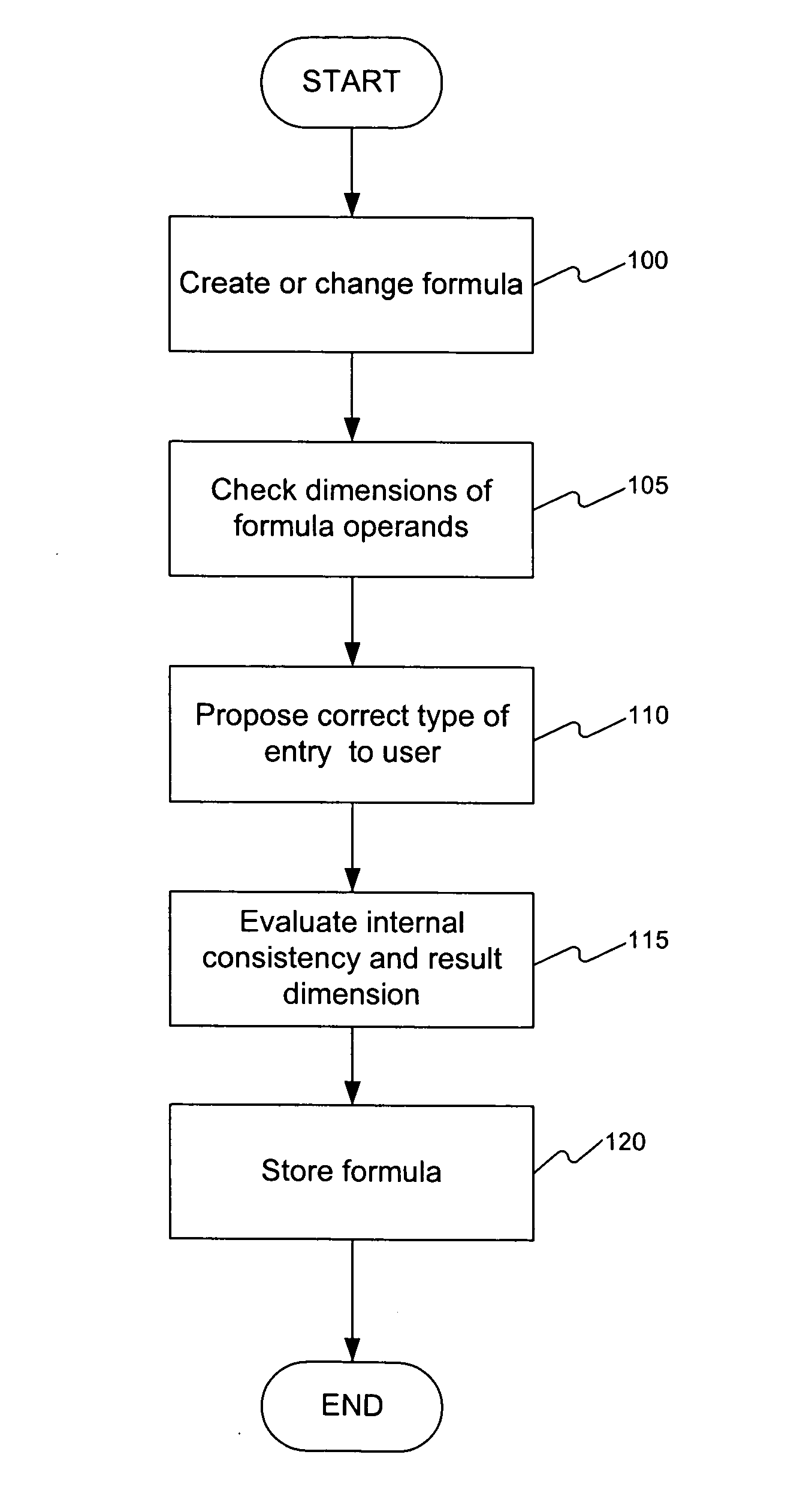Systems and methods for implementing formulas
a formula and formula technology, applied in the field of data processing, can solve problems such as formula output errors, formulas that cannot be multiplied, labels cannot be treated mathematically, and cannot be subtracted
- Summary
- Abstract
- Description
- Claims
- Application Information
AI Technical Summary
Problems solved by technology
Method used
Image
Examples
Embodiment Construction
[0034] Reference will now be made in detail to exemplary embodiments of the invention, examples of which are illustrated in the accompanying drawings. Wherever convenient, the same reference numbers are used in the drawings to refer to the same or like parts.
[0035]FIG. 1 is a flow chart representing an exemplary method for building formulas. The exemplary method of FIG. 1 may be implemented as a computer-executable process using a data processing system or another suitable computing environment. By way of example, in accordance with one embodiment of the invention, the process is included in a formula builder component or tool of an application program, such as a spreadsheet program or database manager program.
[0036] The data processing system executing the process of FIG. 1 first allows a user or a calling program to create or change a formula (step 100). In one embodiment, a formula toolbar interface may be displayed or otherwise provided to allow a user to enter a formula or ed...
PUM
 Login to View More
Login to View More Abstract
Description
Claims
Application Information
 Login to View More
Login to View More - R&D
- Intellectual Property
- Life Sciences
- Materials
- Tech Scout
- Unparalleled Data Quality
- Higher Quality Content
- 60% Fewer Hallucinations
Browse by: Latest US Patents, China's latest patents, Technical Efficacy Thesaurus, Application Domain, Technology Topic, Popular Technical Reports.
© 2025 PatSnap. All rights reserved.Legal|Privacy policy|Modern Slavery Act Transparency Statement|Sitemap|About US| Contact US: help@patsnap.com



